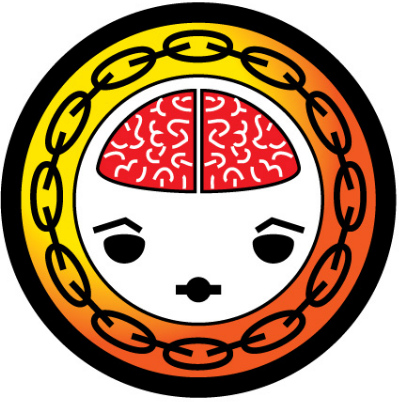
Historically, supply chain leaders managed supply chains in a world of abundance. The industry is plunging into a period of scarcity. What does this mean?
What drives scarcity? There are many factors: war, supply shortages, climate change, labor (knowledge and availability), and shifts in governmental regulation.
Understanding The Shift
In running the supply chain during a period of abundance, waste was a by-product of traditional thinking. It was never measured or managed. Most do not see the issue. The waste included:
- Negative Forecast Value Added (FVA) in demand planning. In 85% of organizations that I work with, conventional demand planning processes increase forecast error. This is amplified across the supply chain into an exponential impact on inventory and planned orders for manufacturing.
- Bullwhip. With the unabated growth in complexity, the bullwhip effect grew. When we measure the bullwhip impact (in my class on outside-in process thinking), the bullwhip between manufacturing and procurement is 2-3X. The use of outside-in signals can reduce it by 40-60%. The difference is opportunity.
- Signal Latency. As the global organization developed, companies increased their dependency on third-party manufacturing and distribution (increasing latency) without investing in value network technologies. Without a synchronized signal, companies make the wrong decisions.
- Inventory Health. I find only 8% of companies actively measure inventory health. Few organizations have the ability to manage the form & function of inventory. (Inventory is both our most important buffer and greatest source of waste.)
- Human Potential. In the building of the global multi-national organization, culture is fragile. Most organizations make small improvements but struggle to sustain value. Good work is often undermined by the chasing of shiny objects. Functional metrics align to bonus incentives, but progress in supply chains remains evasive. As a result, most organizations are spiraling backwards. Sadly, today’s focus is on the use of new technologies to make conventional thinking/technology faster. Caveat Emptor.
Managing in the World of Scarcity
If this resonates, here are some steps to take:
- Measure/Quantify/Drive Change. Measure waste. Use a digital twin to quantify the impact on operating margin. Don’t have digital twin technology? Hire a consultant to do the analysis.
- Build Organizational Talent. Through the analysis, help the organization to see the fallacy in traditional thinking. Measure the tight integration of APS to ERP. Does the bullwhip increase? (Most likely.) Quantify it. Measure the impact of product complexity on FVA and bullwhip. (Does it increase error and inventory targets? Most likely. ) Quantify it. Measure inventory health. Muda comes from many sources. What drives it in your organization? Highlight the waste for the organization. Make it visible.
- Focus on Building Outside-in Business Models. Data latency issues amplify the bullwhip effect. Build outside-in data models to enable business leaders to see and understand market variability.
The Future Role of Supply Chain Planning in the World of Scarcity
One of the things that keeps me up at night is the current focus on using Agentic AI to reduce the number of planners versus a focus on improving planning effectiveness. As you test and understand the potential of Agentic AI, consider how you can use Agentic AI to reduce waste and enable the organization to get data at the speed of business. What would this look like?
- Build an Ontological Framework to Align the Knowledge Graph/Learning Engines. An ontological framework guides learning engines. The ontology encompasses clear naming, and definitions of the categories, properties, and relations between concepts, data, or entities. An ontology guides the learning by defining a set of terms and relational expressions that represent the core definitions. It is adaptable and learning. Ontological definition is a new role for the Supply Chain Center of Excellence.
- Define Agentic AI Governance. Agentic AI is useful in the creation of workflow, policy and rules definition. Don’t automate functional traditional processes with Agentic AI. Create a role within the planning organization to define and automate agentic AI. Build the governance model. Align the process to the organization’s strategy and balanced scorecard. Automating functional metrics like OEE or PPV or reducing functional costs with agentic AI accelerates waste by throwing the supply chain out-of-balance. Measure it and prove it to the organization to drive change management.
- Drive Insights by Role to the Business Leader. Define and Enable Self-Service Supply Chain Planning. Today’s business leaders are dependent on supply chain planners to fetch data. They cannot access data directly from planning systems. Most requests lead to ad-hoc work and meetings. Change this and automate busieness leaders’ ability to get to data directly through what-if collaboration with peers. Use in-memory models to enable self-service.
- Rules Automation. Planners are surrounded by inflexible rule sets that do not work well together: this includes allocation, Available to Promise (ATP, CTP, etc), and customer segmentation–connect Agentic AI to a rules-based Ontological framework to automate rule sets to maximize the trade-offs. In the process, recognize that there will be winners and losers. Not everyone wants ATP and allocation to be automated. In today’s organization there are a lot of ad hoc processes where Fred, the sales guy, talks to Mary in customer service to get what they want for their customers.
Get started by first definining supply chain waste. Analyze the opportunity as we enter the world of scarcity from the world of abundance. The evolution of the space is limited by traditional paradigms and the lack of innovation to take advantage of the art of the possible. Don’t stand on the sidelines, and avoid chasing shiny objects.
Measure/Quantify the Opportunity/Drive Change.
Use this understanding to take advantage of these new opportunities. And, in the process don’t AI Stupid. Don’t make the mistake of layering Agentic AI on top of traditional supply chain planning.






